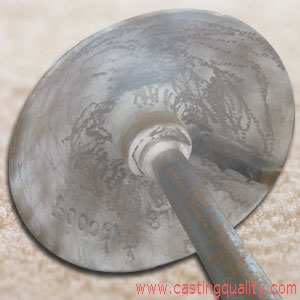Method: Sand Casting anchor body with welded handle.
Material: Carbon steel, mild steel or manganese steel
Magnetic testing Passed.
Chemistry component and mechanical property report provided.
The mushroom anchor is suitable where the seabed is composed of silt or fine sand. It was invented by Robert Stevenson, for use by an 82 ton converted fishing boat, Pharos, which was used as a lightvessel between 1807 and 1810 near to Bell Rock whilst the lighthouse was being constructed. It was equipped with a 1.5 ton example.It is shaped like an inverted mushroom, the head becoming buried in the silt. A counterweight is often provided at the other end of the shank to lay it down before it becomes buried.
A mushroom anchor will normally sink in the silt to the point where it has displaced its own weight in bottom material, thus greatly increasing its holding power. As it can take time for the mushroom anchor to imbed itself into the seabed and achieve its full holding potential, it is often recommended (that if it is to be lifted when it is checked), that the timing of the check be coordinated to follow the stormy part of the season. These anchors are only suitable for a silt or mud bottom, since they rely upon suction and cohesion of the bottom material, which rocky or coarse sand bottoms lack. The holding power of this anchor is at best about twice its weight unless it becomes buried, when it can be as much as ten times its weight [3]. They are available in sizes from about 10 lb up to several tons.

